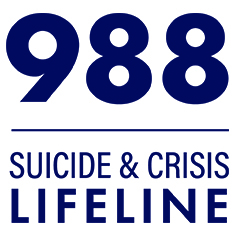Suicide Attempts Treated in Emergency Departments
April 28, 2017
A large multi-year analysis of National Emergency Department Sample (NEDS) data confirmed what previous smaller studies have concluded about the patterns of suicide attempts and self-harm treated in emergency departments (EDs). The authors of this study cautioned that due to the limitations of the data, the analysis is more useful as a description of the impact of suicide-related behaviors on EDs than as an estimate of the incidence of suicide attempts in the U.S.
The analysis found that between 2006 and 2013, there were more than 3.5 million ED visits related to suicide attempts and self-harm. Females accounted for more visits than males (57.4 percent compared to 42.6 percent). The visit rate was highest in late spring. The majority of visits were associated with poisoning (66.5 percent), followed by cutting and piercing (22.1 percent). Almost 83 percent of the patients had a diagnosed mental disorder, of which 42 percent had a mood disorder. Although the average age of patients was about 33, the highest visitation rate was in the 15 to 19 age group.
The authors pointed out that NEDS, which is a subset of the Healthcare Cost and Utilization Project (HCUP), is limited in its ability to accurately reflect the prevalence of suicide attempts for the following reasons:
- About 200,000 injury cases recorded in NEDS each year were not classified as homicide, suicide, or unintentional injury.
- The International Classification of Disease codes used to identify cases of self-harm cannot distinguish between suicidal self-harm and non-suicidal self-harm.
- The database does not include people who attempted suicide but were not treated in EDs or who died before reaching an ED.
Canner, J. K., Giuliano, K., Selvarajah, S., Hammond, E. R., & Schneider, E. B. (2016). Emergency department visits for attempted suicide and self-harm in the USA: 2006-2013. Epidemiology and Psychiatric Sciences, 17, 1–9.
SPARK Extra! To learn more about HCUP and other sources of data on suicidal behaviors, take our online course Locating and Understanding Data for Suicide Prevention.
